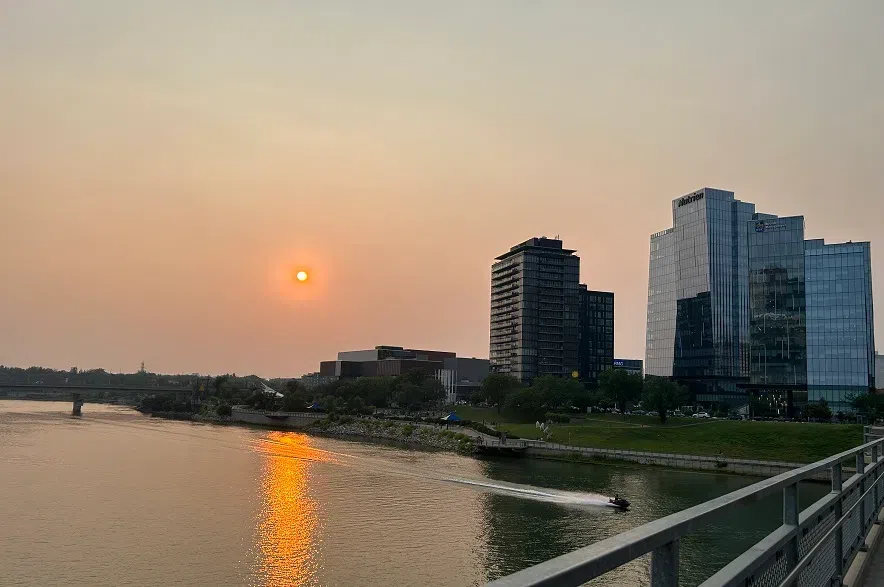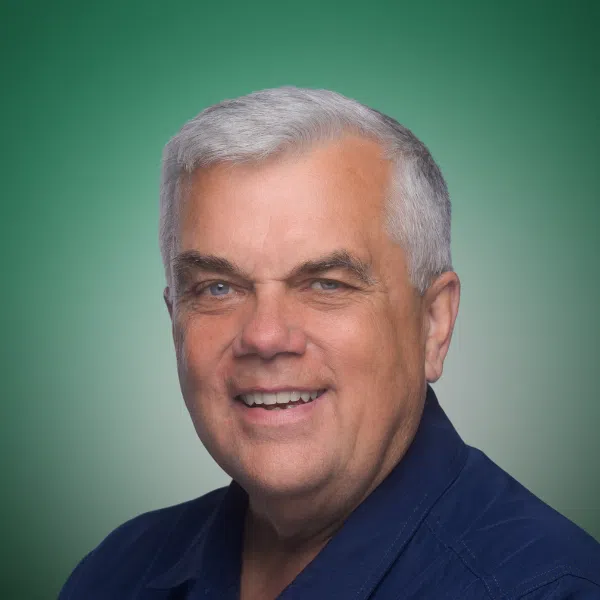Saskatoon is in the middle of the smokiest season on record.
Environment Canada meteorologist Crawford Luke said the city has already logged 182 hours of smoke this year. That’s the highest number of smoke hours ever recorded by this time of year, with data going all the way back to 1953. Regina isn’t far behind, tying its record for this time of year with 168 hours, a number last seen in 1995.
Read more:
- Saskatchewan’s air quality could remain low for days due to wildfire smoke
- Wildfire smoke slows Sask. garden growth, dropping tomato and cucumber yields
- Former Macklin firefighter sentenced to probation, community service for arson
“We’re already ahead of 2023 and 2024, which were both bad years,” Luke said. “And there’s still a week left in July.”
In comparison, Saskatoon had 135 smoke hours by the end of July last year, and 164 hours by this point in 2023. Regina was sitting at 115 hours at the same time last year.
Both cities are now trending ahead of pace, with wildfire season far from over.
Smoke hours are calculated when haze is visible at Environment Canada’s observation sites. The wildfire smoke season typically runs from April to October, though it can start earlier or linger later depending on weather and fire conditions.
According to Luke, the heavy smoke this year reflect trends in wildfire activity and atmospheric conditions.
“This year, wind patterns have brought more smoke south into populated areas,” he said. “At the same time, the northern parts of the province where many of these fire burn haven’t seen much rain.”
While smoke may lift in the short term, one expert says Canadians should prepare for wildfire smoke to become a regular part of life.
Glenn McGillivray, managing director of the Institute for Catastrophic Loss Reduction and adjunct professor at York University, spoke to Evan Bray on 980 CJME and 650 CKOM about the realities of forest management and why smoke may be here to stay.
“To think we can manage the forest in the second-largest country in the world and make huge changes in the production of smoke is… ignorant,” he said. “There’s no such thing as good smoke.”
McGillivray said fires are a natural and essential part of Canada’s boreal forest ecosystem, and certain tree species even rely on fire to reproduce. But while fire may be natural, the smoke it generates is increasingly disrupting life across the country, from Regina to Toronto to New York.
He warned that the long-term smoke exposure hits the most vulnerable people the hardest, including the elderly, children, low-income households, outdoor workers and Indigenous communities. McGillivray said he is calling for public messaging in multiple languages, better indoor air standards and accessible clean-air shelters.
With 50 wildfires still active in Saskatchewan, both Regina and Saskatoon could be on track to break all-time annual records before the summer ends.











